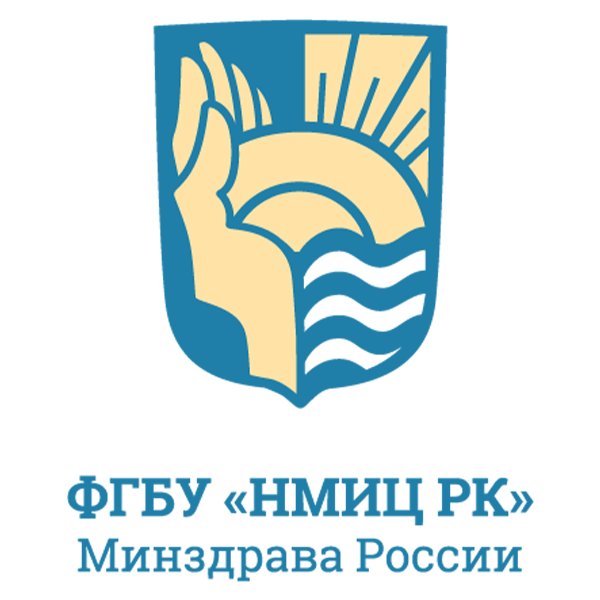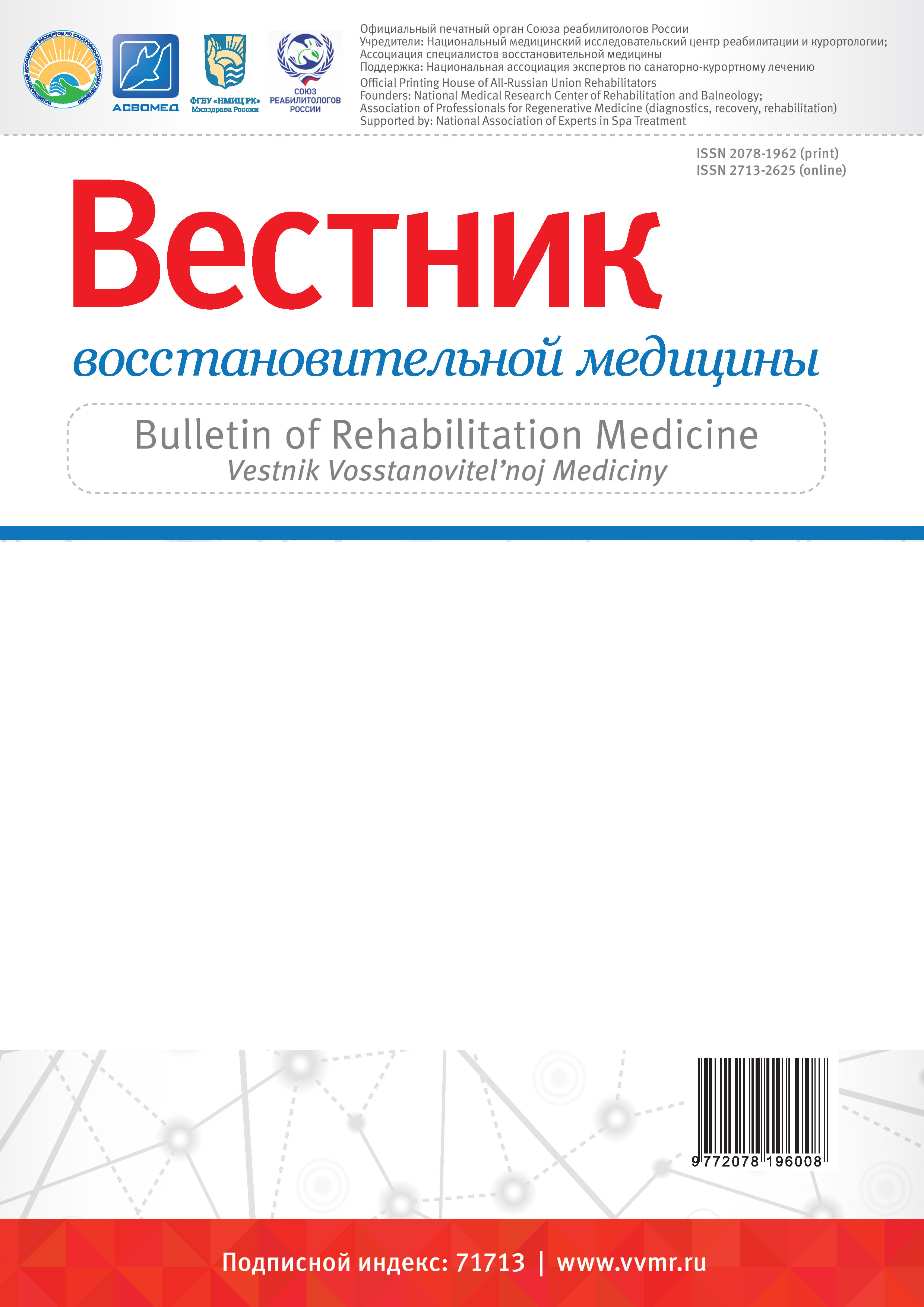INTRODUCTION. Diagnosis and treatment of headache in pediatric patients is of priority medical and social importance, including when correcting it at the sanatorium and health resort stage. Difficulties and problems are associated with the complexity of taking an anamnesis in children, incorrect diagnosis, comorbidity, the need for timely correction of risk factors, and the appointment of the effective pathogenetically proved treatment. AIM. To determine the structure and features of the cephalgic syndrome in pediatric patients undergoing treatment in Evpatoria sanatoriums and to determine the effectiveness of psychological correction in the treatment of patients with frequent tension-type headache by using the method of music therapy method. MATERIAL AND METHODS. As a result of a complex examination of pediatric patients, 150 patients with headache complaints were selected out of 513 examined by the method of simple random sampling. Together with a psychologist, a subgroup of 30 patients with frequent tension headaches was selected from the total number of patients after psychological testing for whom music therapy was included in the treatment plan. RESULTS AND DISCUSSION. In the structure of the cephalgic syndrome the prevalence of tension headache was revealed, while 20% of patients had frequent episodic tension headache against the background of increased anxiety and fatigability, which significantly affects quality of life and social functioning. The patients who underwent correction of tension headaches by music therapy showed improvement of extraversion indices, reduction of neuroticism, decrease of anxiety, fatigability and irritability indices, decrease of frequency and intensity of headaches. None of the patients were diagnosed with headache according to ICHD-III in the referral diagnosis for sanatorium treatment, but were diagnosed with vegetative-vascular dystonia and other comorbidities. CONCLUSION. The obtained data of a complex examination made it possible to substantiate a pathogenetically differentiated rehabilitation course in sanatorium treatment and led to an increase in the efficiency and quality of treatment for each patient. Using the method of music therapy, emotional and psychological correction was carried out, which occupies an important place in the relief of headache in pediatric patients.
headache, cephalgia, childhood, music therapy, sanatorium treatment, migraine, tension-type headache.
1. Golovacheva V.A., Golovacheva A.A., Antonenko L.M. Migren' u detey i podrostkov: sovremennye principy diagnostiki i lecheniya Nevrologiya, neyropsihiatriya, psihosomatika. 2021; 13(6): 111-116. https://doi.org/10.14412/2074-2711-2021-6-111-116
2. Sergeev A.V. Migren' i golovnaya bol' napryazheniya u detey: osnovnye podhody k effektivnoy terapii. Chast' 1. Voprosy sovremennoy pediatrii. 2012; 11(5): 64-69. https://doi.org/10.15690/vsp.v11i5.430
3. Zavadenko N.N., Nesterovskiy Yu.E. Golovnye boli u detey i podrostkov: klinicheskie osobennosti i profilaktika. Voprosy sovremennoy pediatrii. 2011: 2(10): 162-169.
4. Zhmyleva P.V., Tabeeva G.R., Sergeev A.V. Detskie ekvivalenty migreni. Nevrologiya, neyropsihiatriya, psihosomatika. 2021; 13(1): 94-100. https://doi.org/10.14412/2074-2711-2021-1-94-100
5. Oskoui M., Pringsheim T., Holler-Managan Y. et al. Practice guideline update summary: Acute treatment of migraine in children and adolescents: Report of the Guideline Development, Dissemination, and Implementation Subcommittee of the American Academy of Neurology and the American Headache Society. Neurology. 2019: 10:93(11): 487-99. https://doi.org/10.1212/WNL.0000000000008095
6. Lund O., Berring-Uldum A., Colak M., Monique Debes N.M. Headache in Children and Adolescents: The Association between Screen Time and Headache within a Clinical Headache Population. Neuropediatrics. 2022; 53(04): 221-226. https://doi.org/10.1055/s-0041-1740550
7. The International Classification of Headache Disorders, 3rd edition. Cephalalgia. 2018; 38(1): 1-21. https://doi.org/10.1177/0333102417738202
8. Osipova V.V., Tabeeva G.R. Pervichnye golovnye boli: diagnostika, klinika, terapiya. Prakticheskoe rukovodstvo. Moskva. Medicinskoe informacionnoe agentstvo. 2014.
9. Guseva E.I., Konovalova A.I., Skvorcovoy V.I. Nevrologiya. Nacional'noe rukovodstvo. Moskva. GEOTAR-Media. 2018.
10. Gerstl L., Tadych N., Heinen F. et al. Migraine and the development of additional psychiatric and pain disorders in the transition fr om adolescence to adulthood. Cephalalgia. 2021; 41(13): 1342-1347. https://doi.org/10.1177/03331024211021792
11. Teshamae S. Monteith, Till Sprenger. Tension Type Headache in Adolescence and Childhood: Wh ere Are We Now? Current Pain and Headache Reports, 2010; 14(6): 424-430, https://doi.org/10.1007/s11916-010-0149-z
12. Stagnieva I.V., Boyko N.V. Golovnaya i licevaya bol' pri rinosinusite. Medicinskiy vestnik Yuga Rossii. 2014; (3): 55-59
13. Osipova V.V. Pervichnye golovnye boli v praktike nevrologa i terapevta. Moskva. GEOTAR-Media. 2020.
14. Ziplow J. The Psychiatric Comorbidities of Migraine in Children and Adolescents. Current Pain and Headache Reports. 2021: 25(11): 11916-021. https://doi.org/10.1007/s11916-021-00983-y
15. Manevich T.M., Sokolova E.D., Yahno N.N. Hronicheskie golovnye boli napryazheniya u detey i podrostkov: psihosomaticheskiy podhod k diagnostike i lecheniyu. Bol'. 2004; 1(2): 7-11.
16. Youssef P.E., Mack K.J. Episodic and chronic migraine in children. Developmental Medicine & Child Neurology. 2020; 62(1): 34-41. https://doi.org/10.1111/dmcn.14338
17. Rachin A.P., Mihaylova E.V. Depressivnye i trevozhnye rasstroystva. Moskva. GEOTAR-Media. 2010.
18. Tereschenko O.N., Kost N.V., Medvedev V.E. Sovremennye tendencii patogeneticheskoy terapii trevogi. Chast' 2. Psihiatriya. 2018; 2(78): 106- 115. https://doi.org/10.30629/2618-6667-2018-78-106-115
19. Danilov A.B. Upravlenie bol'yu. Biopsihosocial'nyy podhod. Moskva. AMM PRESS. 2016.
20. Shimomura H. Emotional Problems in Pediatric Headache Patients. Current Pain and Headache Reports. 2022; 26(6): 469-474. https://doi.org/10.1007/s11916-022-01045-7
21. Petrushin V.I. Muzykal'naya psihologiya: uchebnoe posobie dlya studentov i prepodavateley. Moskva. Gumanitarnyy izdatel'skiy centr VLADOS. 2001.
22. Shushardzhan S.V. Muzykoterapiya i rezervy chelovecheskogo organizma. Moskva. Medicina. 2008.
23. Kuznecov V.G. Ocenka urovnya trevozhnosti v ramkah adaptacionnyh paradigm u devochek s patologiey reproduktivnoy sfery na etape sanatorno-kurortnogo lecheniya. Vestnik fizioterapii i kurortologii. 2013; (1): 22-25.
24. Golubova T.F., Slyusarenko A.V., Bura G.V. Sostoyanie adaptacionno-kompensatornyh vozmozhnostey detey s psihonevrologicheskoy patologiey, postupayuschih na sanatorno-kurortnoe lechenie. Vestnik fizioterapii i kurortologii. 2007: 13 (2): 102 c.
25. Golubova T.F., Lyubchik V.N., Semenyak E.G. Dinamika funkcional'nyh i psihicheskih pokazateley u detey s raznym urovnem vertirovannosti v usloviyah Evpatoriyskogo kurorta. Vestnik fizioterapii i kurortologii. 2021: 2: 17-21.
26. Oskoui M., Pringsheim T., Holler-Managan Y. et al. Pharmacologic treatment for pediatric migraine prevention. Report of the Guideline Development, Dissemination, and Implementation Subcommittee of the American Academy of Neurology and the American Headache Society. Neurology. 2020; 94(1): 50. https://doi.org/10.1212/WNL.0000000000008750
27. Ivanova G.E. Prakticheskoe primenenie ocenochnyh shkal v medicinskoy reabilitacii. Faza 1: metodicheskie rekomendacii. Moskva. 2015.
28. Kadykova A.S., Manvelova L.S. Testy i shkaly v nevrologii: rukovodstvo dlya vrachey. Moskva. MEDpress-inform. 2016.






